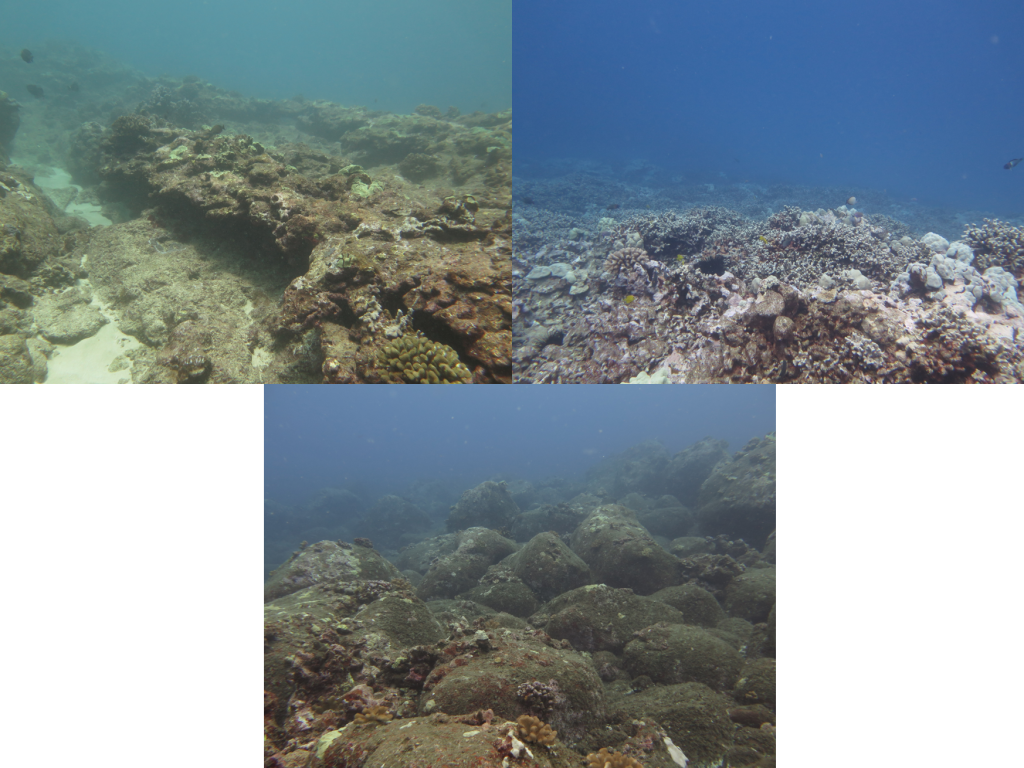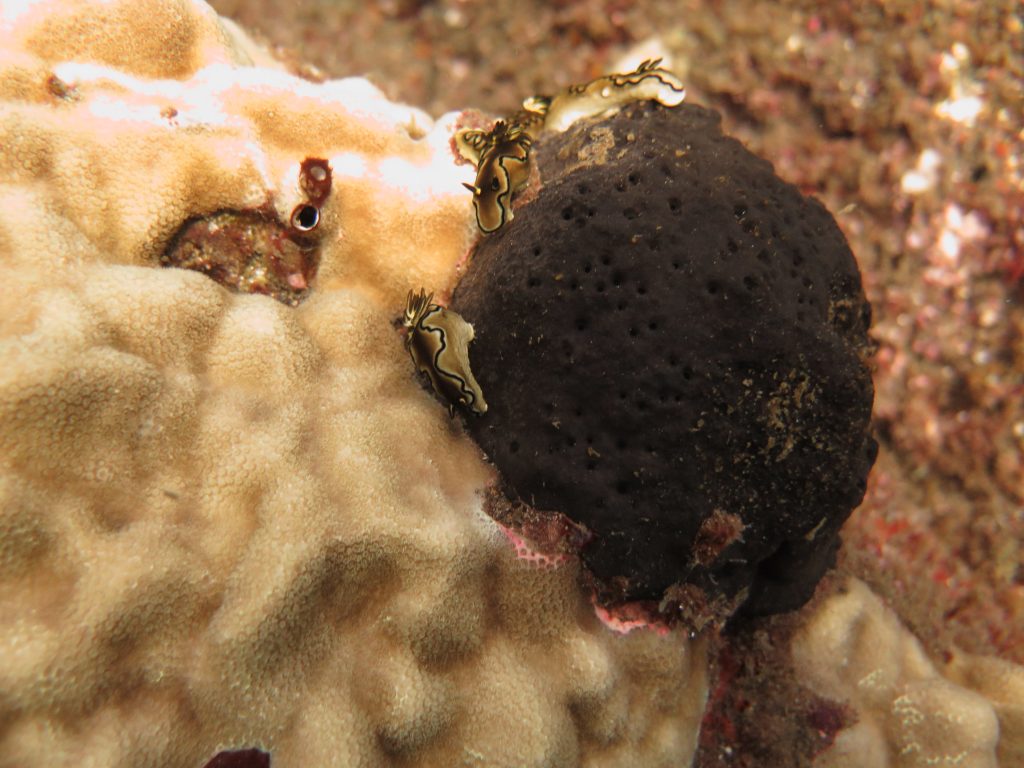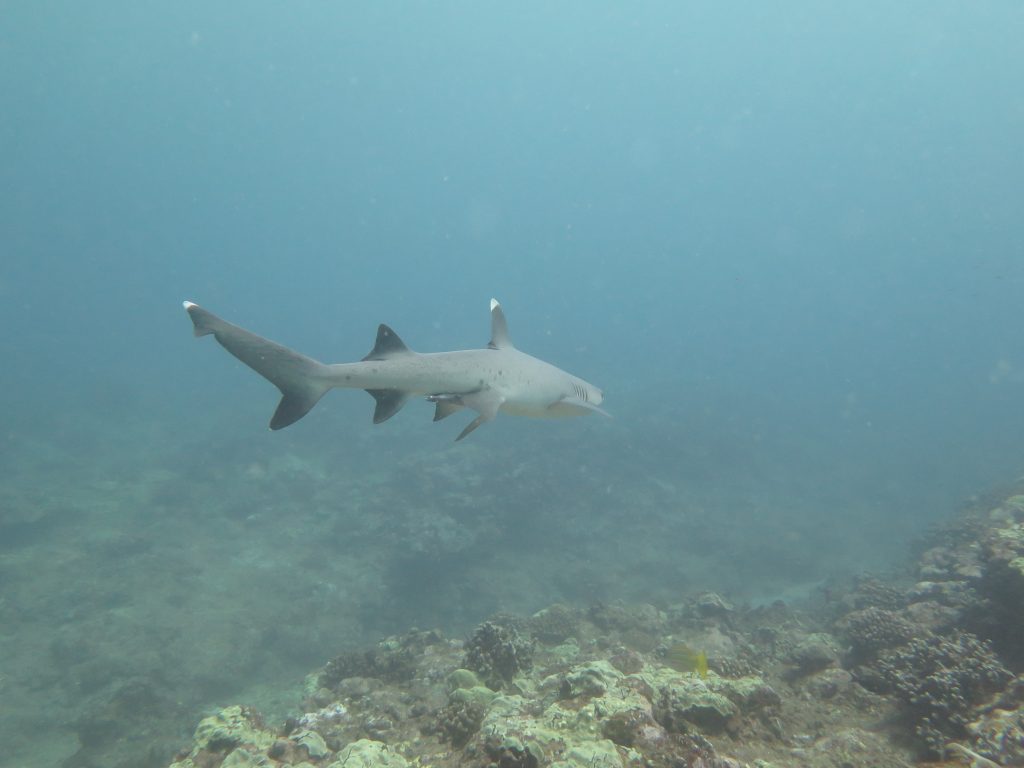11/16/23 – Coral Reef Monitoring in East Hawaiʻi
Devon Aguiar, HCRI East Hawaiʻi Habitat and Fish Monitoring Specialist
Starting in December 2022, DAR began conducting coral reef monitoring surveys throughout the East coast of Hawaiʻi Island. Because this region has not been a major focal point for coral reef research, little is known about reefs in East Hawaiʻi. Using SCUBA survey methods employed by DAR teams on other islands, we can collect paired fish and benthic (bottom habitat) data from each survey. This paired approach allows us to directly link fish observations to different habitat types.

Different types of reef habitats observed in East Hawaiʻi
To date we have conducted 74 surveys throughout Keaukaha, Blonde reef, and the Hilo Palikū coastline. Each of these sites have unique physical features that reflect the environment, such as spur and groove formations on reefs exposed to waves. These formations are characterized by long ridges of coral separated by deep sand channels. In addition to the physical aspects, we have also gained insight into the organisms living on these reefs. We have observed unique invertebrates such as the endemic coral Porites hawaiiensis, the oceanic sponge (Spongia oceania), and several nudibranch species. We have also documented a variety of fish species at these sites, some of which are less common in other parts of the Main Hawaiian Islands. During surveys we’ve come across schools of large adult and juvenile kole (Ctenochaetus strigosis), some knifejaws (Oplegnatus punctatus), and even a curious white tip shark (Triaenodon obesus).

Black margin nudibranchs feeding on an oceanic sponge

A white tip shark stops by during a survey
With the goal of monitoring and tracking changes on the reef, we plan to continue our surveys next year we aim to continue these surveys long-term. In addition to re-visiting some areas, we also plan to survey additional portions of the coastline to gain a broader perspective of the marine environments in East Hawai‘i. We also plan to integrate novel more advanced and modern techniques such as Structure from Motion photogrammetry to better understand the complexity of reef structures at each site.
This work is funded by the National Oceanic and Atmospheric Administration Coral Reef Conservation Program award number NA21NOS4820017.
